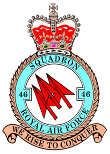|
was nothing to do but wait for the weather to improve. In the afternoon the wind dropped and everything was back to normal and work was hurriedly resumed to get the planes ready. Our ground crews were doing a wonderful job, especially with the radar because it was so susceptible to damage from sand. We were lucky because sometimes sandstorms went on for days and there was nothing we could do but wait it out. The planes went off as scheduled, Chapman being first off at 9:50 p.m. and Steele was the last to land at 6:10 a.m. on the morning of Oct.1st. The crew of Bradley and Forrester destroyed a Dornier 24 seaplane, which brought the Squadron score to 11 destroyed, 1 probable and 3 damaged. Some of the other crews taking part in the night's operation had intercepted the enemy but had opened fire before they were close enough to do real damage. It had become obvious to the crews that were being successful, that it was very important to get within 250 yards before opening fire. Hammond and I had compared notes and had agreed that the best attack was to get as close as possible and move the control column around slightly while firing. This had the effect of spraying the shells and meant that the cone of fire was larger. Crude but effective, as was borne out by the results we were getting! There was one sad note about the night's operations. 108 Night Fighter Squadron had sent three planes into the target area; one of them crewed by W/O Knight and Flt./Sgt. Harwood. We all knew this crew because they had been with No 46 Sqn. before being posted to 108. They failed to return. The Ulster Queen last heard from them as they chased a bandit toward the island of Melos. This turned out to be the only casualty of the whole operation. On the evening of October 1st, Graham and I were first off and we were airborne at 8:05 p.m., followed by Joe Irwin and his radar operator P/O.Watson. This was their first patrol and we were all hoping they would have success. They would be followed by three more crews, which meant that this would be our busiest night with a total of five aircraft being used. As we left the dispersal area, it was a hive of activity, with planes being readied for take-off. Once airborne, we started climbing to our cruising altitude of 6000 feet and headed for the western end of Crete on a course of 343°. This was our third night on patrol and I kept reminding myself not to get too complacent because we had been very lucky so far. It didn't seem possible that we could dominate the enemy airspace night after night without some kind of opposition. We were in a different plane tonight, our usual having been returned to Idku for service. It was easy to get attached to an airplane and I hoped that this one would serve us as well. As usual we lost altitude as we approached the enemy coast and I went through my routine of setting the controls for very low flying. Graham turned on the radar while I armed the guns and set the rheostat on the gun sight. We were as ready as we could be when we made landfall at Elaphonisi on the coast of Crete. We turned on to a course of 50°, which would take us toward the Ulster Queen. After a few minutes I made contact with Trademark and was told to patrol east/west at Angels One. The time was 9:35 p.m. There was thunder and a lot of lightning flashes in the patrol area. At 1000 feet there was a layer of strata-cumulus cloud and the moon was full. Lightning was illuminating the clouds, creating a beautiful but eerie scene. We flew back and forth under the Controller's direction for the next 30 minutes, during which time we had been increasing altitude to 4000 feet. At 10:05 p.m. Trademark informed us of a bogey on a course of 330°. Range 12 miles. Speed 150 and height 4500 feet. Vector 310° to intercept. This indicated we would be on a slightly converging course and the bogey would be on our right hand side as we got closer. At 10:13 p.m., we obtained a contact on our radar 4 miles ahead and closed in slowly. Three minutes later we still had not gotten a visual contact when the Controller told us to break off pursuit. The target had broken away and he didn’t think we could catch him. There was another bandit coming north at low level. He told us to reduce height to 500 feet as quickly as we could and watch for target to cross from port to starboard. We dived down to 500 feet and at 10:16 p.m. we again obtained radar contact at a range of 5 miles and I informed the Controller we were taking over the interception. The target was still slightly below us. Graham directed me to turn on to 330°. Our airspeed was 220 m.p.h. and we were closing slowly. At 10:24 p.m. I got a visual contact at a range of one mile, slightly above us. We were about 10 miles west of the island of Melos. |





